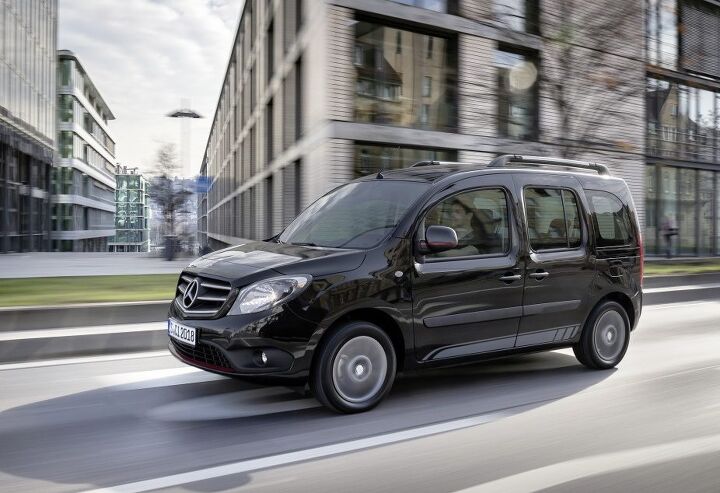#kangaroo
More Van News From Mercedes-Benz
Despite vans being slightly more popular than getting a thumb in the eye, Mercedes-Benz is sticking with them. Earlier in the month, the automaker revealed the production version of its 252-mile (we’ll see) EQV. Essentially an electrified version of the plush V-Class/Metris, the model will likely serve a very specific subset of the population.
On the other end of the spectrum, Daimler has been mulling over what should be done about the Citan. As the smallest van in MB’s range, the Citan also has the lowest point of entry. However, sales are roughly one-sixth what the V-Class sees in Europe, making it a plausible candidate for discontinuation. But it was not to be. On Friday, Daimler announced it will keep its smallest MPV on the table.
Defiant Kangaroos Stand Firmly in Path of Soulless, Self-Driving Future
Who knew strange animals born with a sack stuck to their bellies would prove to be the largest hurdle in the advent of driverless vehicles? In areas where you’ll find marsupials, anyway.
While North American drivers have long grown used to smacking deer with their personal vehicles, it’s a different story in the land of Paul Hogan, Nicole Kidman, and the amiable fellow from Jurassic Park. A full 80 percent of vehicle-animal collisions on that extremely large island and/or continent involve a kangaroo. It now seems the manner in which the limber creatures get around has created a headache for a certain Scandinavian car company — one hoping to lead the industry in hands-off driving.

















Recent Comments